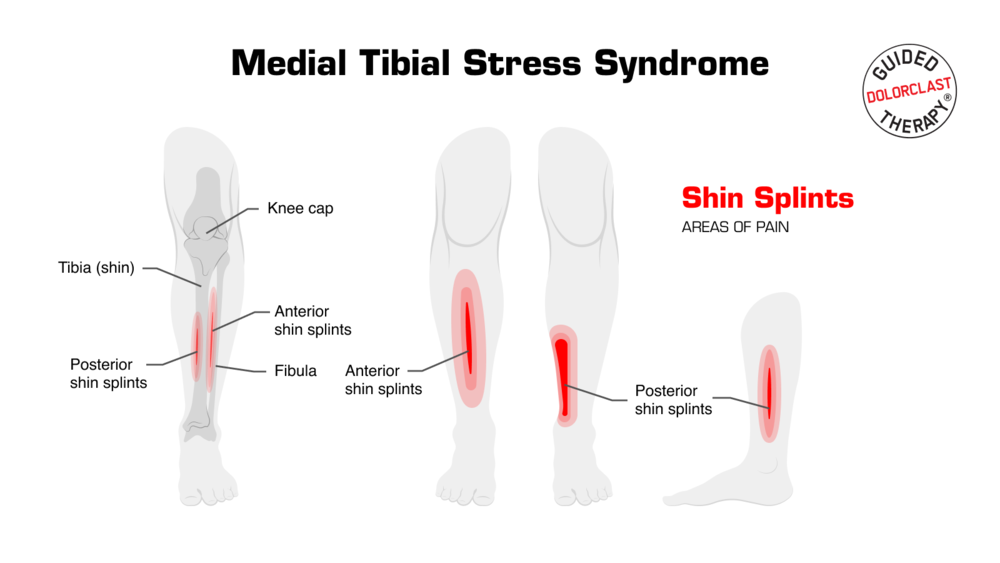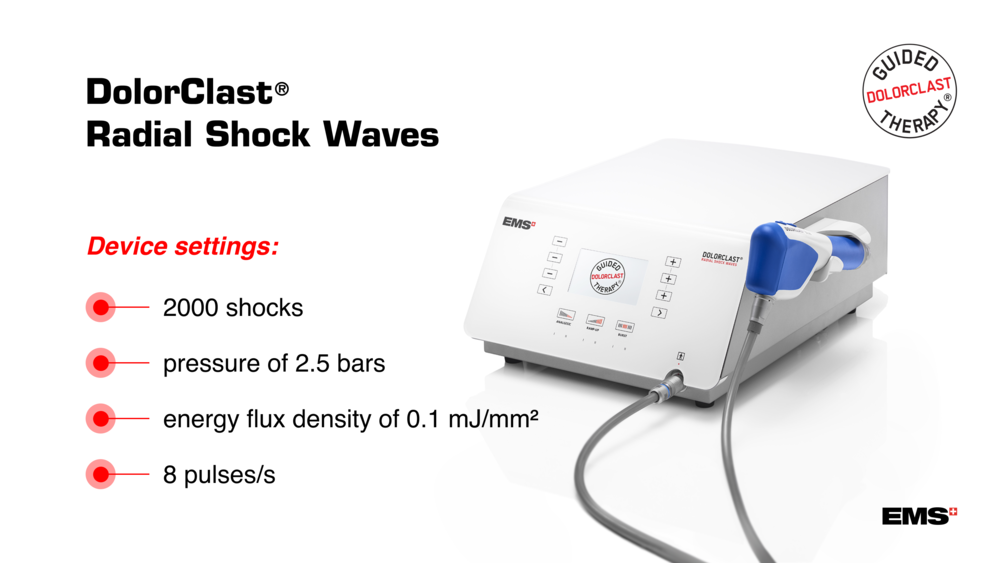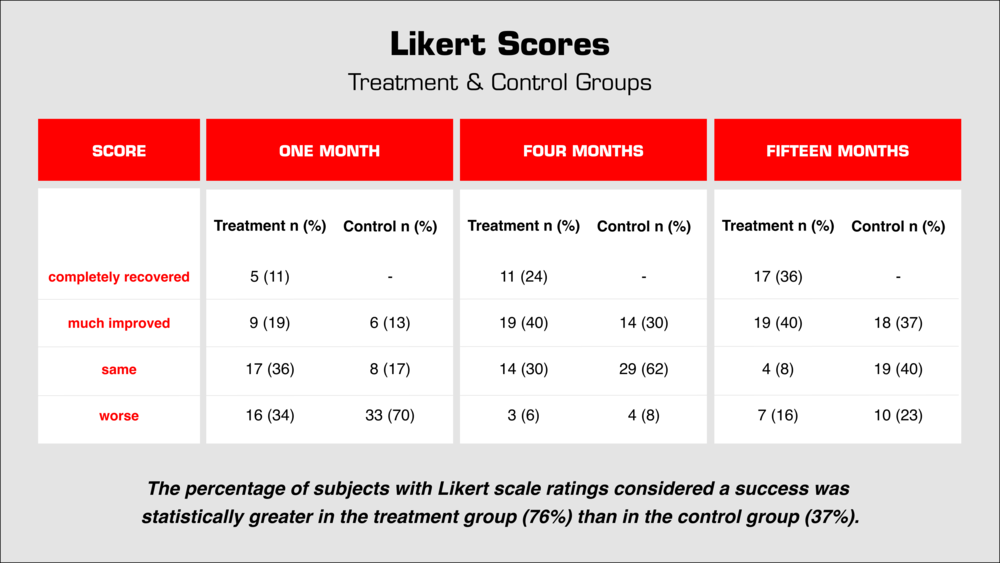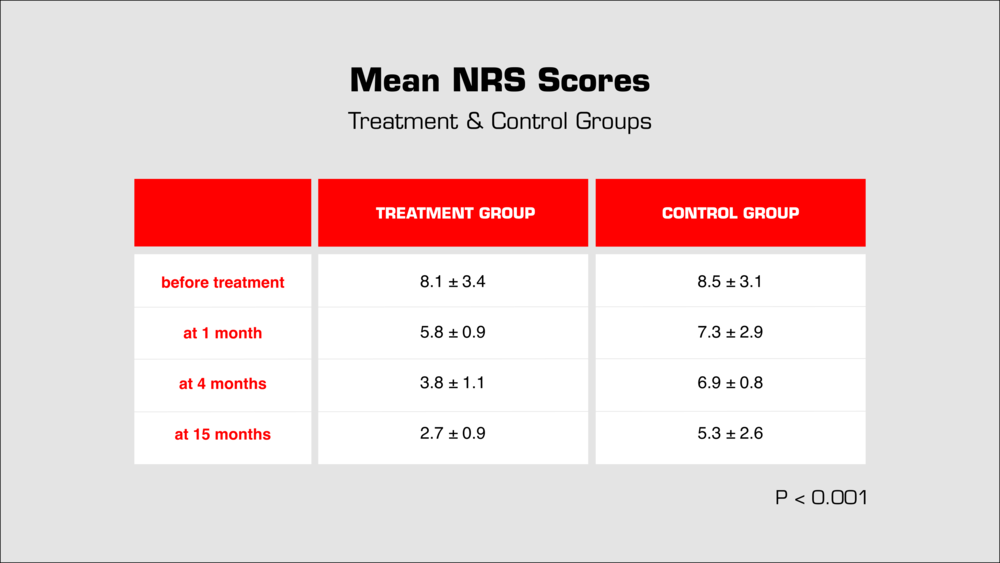
Shock Wave Therapy as a treatment for Medial Tibial Stress Syndrome
Rompe JD, Cacchio A, Furia JP, Maffulli N. Low-energy extracorporeal shock wave therapy as a treatment for medial tibial stress syndrome. Am J Sports Med. 2010 Jan;38(1):125-32
Background
The study described below aimed to determine whether low-energy extracorporeal shock wave therapy (SWT) is proper for treating chronic Medial Tibial Stress Syndrome (MTSS), also known as shin splints.
Would you like to learn more about medial tibial stress syndrome? Visit the indication page and discover how can you use Guided DolorClast® Therapy approach when treating patients with shin splints!

Patients & methods
This pragmatic study took place in the secondary care settings. A total of 127 patients who suffered from unilateral chronic MTSS for at least six months were enrolled. It is urgent to mention that only subjects that had failed at least 3 forms of traditional nonoperative measures (relative rest, icing, NSAIDs, stretching, strengthening and awareness for biomechanical factors, e.g. overpronation) for a minimum of 3 months were included.
All subjects were offered a standardized home training program combined with radial SWT. 49 patients made an informed decision to use shock wave therapy, while 78 declined.
The treatment group consisted of 47 subjects - two patients treated with SWT were excluded from the analysis (one of them underwent concomitant treatment of Achilles tendinopathy with low-energy SWT; in case of the other subject, there was insufficient follow-up data). The control group was constituted after excluding 31 patients and consisted of 47 subjects with no difference in mean age or mean duration of symptoms compared to the treatment group.
All subjects were managed with relative rest, ice and a home training program, and invited to see the physician to check compliance at weeks 2, 3 and 4. The following rehabilitation exercises were instructed to be completed twice a day, every day for 12 weeks:
- calf stretching,
- Thera-Band stretching,
- heel raises,
- toe raises.
Patients from the treatment group were additionally treated with SWT. The shock wave treatment was performed at weeks 2, 3 and 4 after the start of the home training program with the use of EMS Swiss DolorClast® (device settings: 2000 shocks, pressure of 2.5 bars, energy flux density of 0.1 mJ/mm2, 8 pulses/s). The treatments were delivered in a medial-to-lateral direction and the average treated area was approximately 2-4 by 4-8 cm.

The primary outcome was measured as a degree of recovery at 4 months compared with baseline, while the secondary outcome was measured as a degree of recovery at 1 and 15 months compared with baseline.
The evaluation included measurements conducted on a 6-point Likert scale with answers: “completely recovered”, “much improved”, “somewhat improved”, “same”, “worse” or “much worse”. Answers “completely recovered” and “much improved” were considered a success, while answers from “somewhat improved” to “much worse” were considered a failure.
Additional assessments included severity of pain during the past week described at 1, 4 and 15 months from baseline. The NRS (Numeric Rating Scale) from “0 - no pain” to “10 - very severe pain” was used. Furthermore, current sports activities were evaluated and compared with levels of exercise in the period before MTSS.
Results
Likert Scores
The percentage of subjects with Likert scale ratings considered a success was statistically greater in the treatment group (76%) than in the control group (37%). None subjects involved in the study reported a worsening of symptoms.

Numeric Rating Score
Comparing the NRS score and the mean difference of change in both groups revealed that the results and changes were significantly greater for the treatment group than the control group.

Activity
At 15 months from baseline, 85% (n = 40) of subjects from the treatment group and 47% (n = 22) of subjects from the control group had been able to return to their preferred sport at their pre-injury level.
Conclusion
As the study shows, you can achieve significantly better treatment results in your patients when treating medial tibial stress syndrome with additional low-energy extracorporeal shock wave therapy. What is more, the shock wave therapy turned out to be not only effective, but also safe. As proved by the research, it gives significant, long term improvement in case of MTSS.
